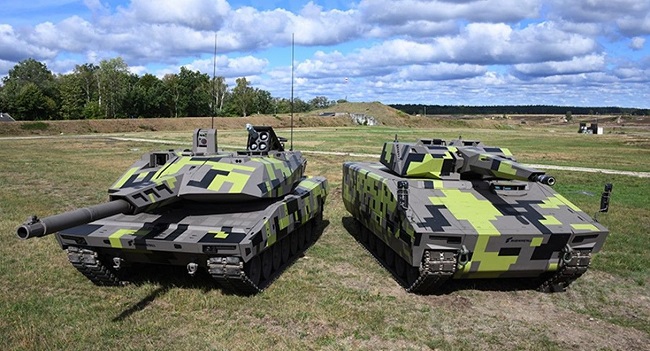
On July 4, Leonardo and Rheinmetall signed a MoU for the creation of a 50-50 Joint Venture (JV) to manage the 2 major acquisition programs for the Italian Army: the IMBT (Italian Main Battle Tank) and the new tracked infantry fighting vehicle (AICS, Armored Infantry Combat System, or A2CS, Army Armored Combat System).
As can be read from the 2 companies' press release, the starting base will be represented by the PANTHER tank, currently under development by Rheinmetall, and the IFV LYNX, a largely mature vehicle. The LYNX has already been purchased by Hungary, which is receiving the first batch of 46 examples and in December 2023 kicked off in-house production of the vehicle, while, as far as the PANTHER is concerned, Rheinmetall has signed an agreement with Hungary (again) for the development and qualification of a demonstrator of the MBT, in the EVO version with 120 mm cannon, paving the way for subsequent local production.
Returning to Italy, the new Joint Venture will act as prime contractor for the 2 programs, while " the mission systems, electronic suites and integration of weapon systems will be developed and produced by Leonardo according to the requirements of the Italian customer."
No details were provided about the actual workshare, but it was specified in the communiqués that the Italian share will be 60 percent with assembly lines, homologation testing and logistical support in Italy. It was precisely on the 60%, as we could understand, that negotiations with KNDS had sinked.
The new JV will also be responsible for marketing the IMBT/PANTHER and AICS/LYNX in international markets and for defining the roadmap for participation in the program for the future European MGCS battlewagon. Overall, this is a far-reaching agreement. At the moment this is about the management of the 2 programs, but these are 2 programs with a huge economic-financial burden, 23 billion euros.
No other country in Europe today has anything like this in the land sector. Therefore, Italy wants to get the maximum possible return in terms of industrial know-how, design authority, and operational and logistical support. Then it is clear that the Joint Venture could only be a first step toward an even more structured cooperation between Leonardo and Rheinmetall, as indeed leanks from the same communiqués with the reference to the MGCS.
Now, however, it was necessary to rush, also because the goal is to sign the contracts for IMBT and AICS within the year. This also creates an heartquake for the MGCS programme between KNDS and Rheinmetall, and between the French, German and Italian governments, but at this point the situation and perspective are becoming very dynamic and the hypothesis of 2 different MGCS programmes is more concrete.
Finally, the role of IDV (Iveco Defence Vehicles) and CIO (Iveco OTO Melara Consortium) remains to be clarified. The CIO had received last February from the Directorate of Land Armaments the letter of offer for the feasibility study related to the AICS (or A2CS) program and for the indication of the international partner with whom to develop the family of vehicles, while negotiations for the acquisition of IDV by Leonardo, officially denied, seem at play, instead. In the coming weeks we will certainly better understand what impact the Leonardo/Rheinmetall agreement will also have on the Italian land defense sector and on the relationship between Leonardo and IDV.








.png)
